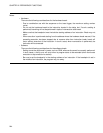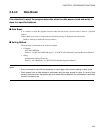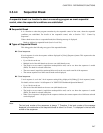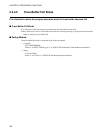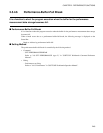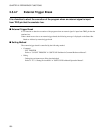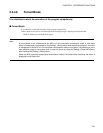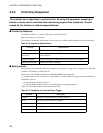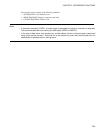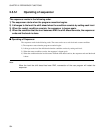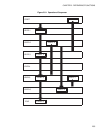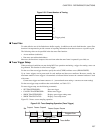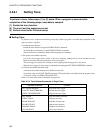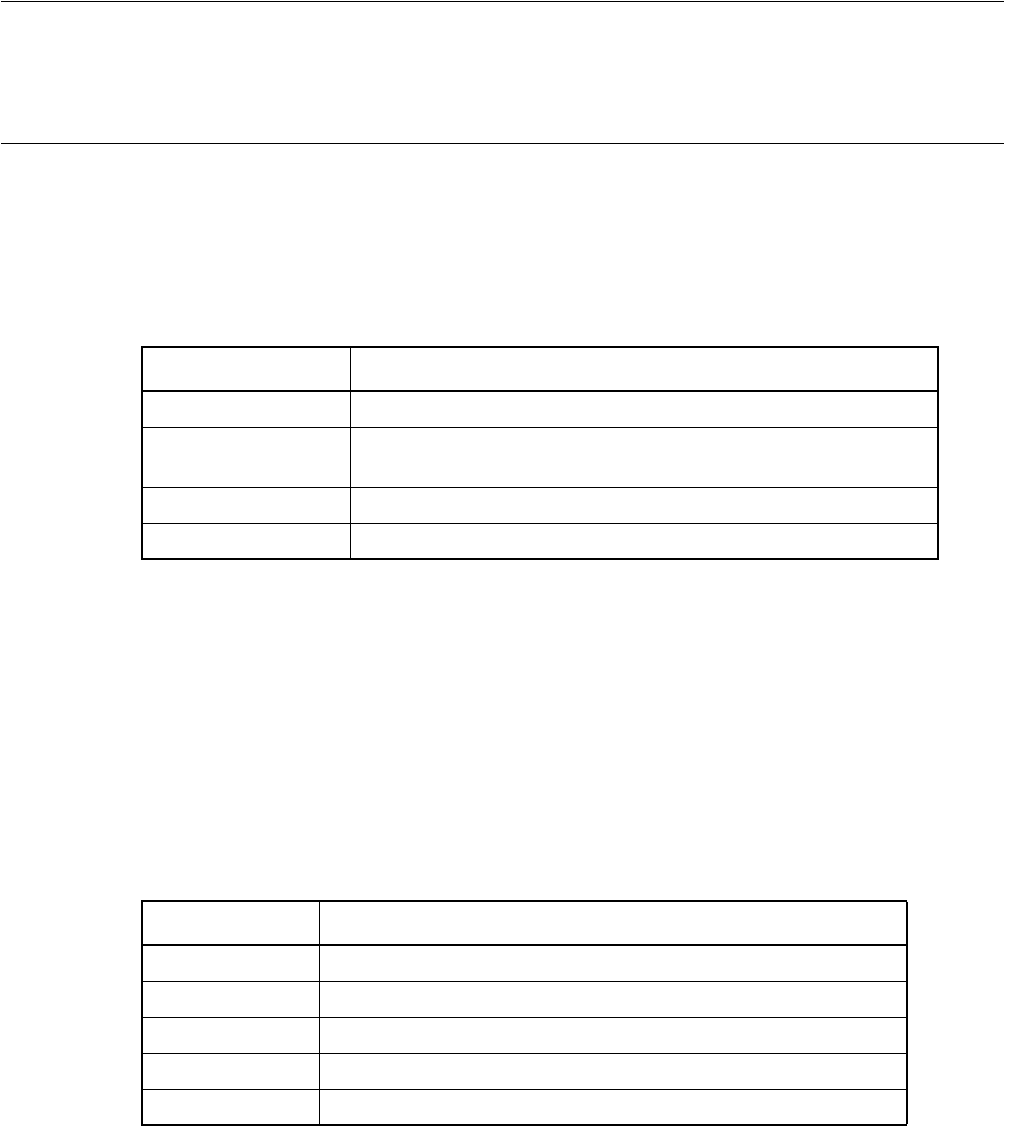
252
CHAPTER 2 DEPENDENCE FUNCTIONS
2.5.5 Control by Sequencer
This emulator has a sequencer to control events. By using this sequencer, sampling of
breaks or traces can be controlled while monitoring program flow (sequence). A break
caused by this function is called a sequential break.
■ Control by Sequencer
As shown in Table 2.5-2, controls can be made at 8 different levels.
One event can be set for one level.
The sequencer can perform shift from any level to any level, and the restart conditions can also be specified.
■ Setting Events
The emulator can monitor the MCU bus operation, and generate a trigger for a sequencer at a specified
condition. This function is called an event.
In the event, code (/CODE) and data access (/READ/WRITE) can be specified.
Up to eight events can be set. However, since hardware is shared with trace triggers, the actual numbers is
calculated as follows.
Current maximum constant of events =
8 - (current number of break settings + current number of trace trigger settings)
Table 2.5-3 shows the conditions that can be set for events.
Table 2.5-2 Sequencer Specifications
Function Specifications
Level count 8 level
Conditions settable for
each level
1 event conditions (1 to 65535 times pass count can be specified for
each condition.)
Restart conditions 1 event conditions (1 to 65535 times pass count can be specified.)
Operations after shift Break, trace control (start/end)
Table 2.5-3 Conditions for Event and Trace Trigger
Condition Description
Address Memory location (address bit masking disabled)
Data 16-bit data (data bit masking enabled)
Access size Byte, word
Access attribute Code/Data read/Data write
Bus master CPU, DMA



